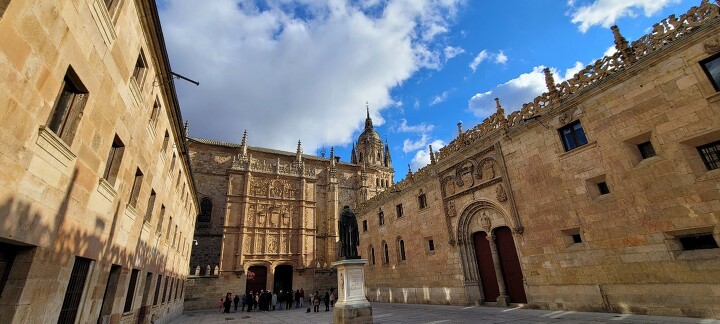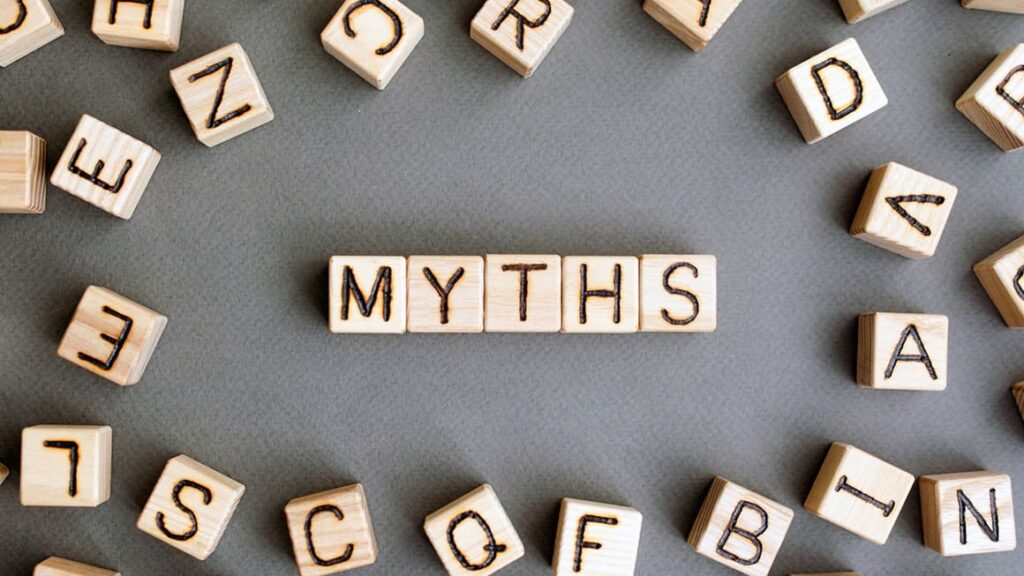A school is an educational institution where teachers impart knowledge to students of all ages. Formal education dates back to ancient Greece and Rome, covering subjects like military training, reading, writing, physical education, and musical instruction.
The school was invented to provide structured education, impart knowledge, and cultivate skills in individuals. It serves as a means of socialization, transmitting cultural values, and preparing people for societal roles.
Every student, at some point, wonders about the origins of school—whether grappling with calculus or enduring gym class. While most recognize the importance of education, finding passion for the institution often takes time.
The Early Origins of Education!
Understanding modern education is intricately linked to history, playing a pivotal role in shaping the educational systems we have today.
Why was school invented? While schooling, in some form, has existed throughout history, the inception of a structured and efficient school system can be traced back to Ancient Rome, China, and Greece.
The question of “Why was school invented?” invites exploration into the origins and motivations behind the establishment of organized systems for learning.
1. Education in Ancient Civilizations:

In ancient times, formal schools existed in Ancient Greece and Rome, where students convened in dedicated learning spaces known as academies.
However, it was the Byzantine Empire that pioneered the establishment of the first primary educational system in 425 A.D.
Notably, these early primary schools differed significantly from contemporary institutions, as their primary purpose was to train individuals for military service.
In addition to military training, students in these ancient schools also received instruction in subjects such as mathematics, history, philosophy, and language.
Education during this era extended beyond academic disciplines to encompass practical skills like hunting, pottery making, and communication.
The overarching goal was to instill in children a sense of independence, with knowledge being primarily transmitted from the older generation.
2. The Emergence of Formal Schools:
Beyond the realms of Greece and Rome, formal education also found its roots in ancient India and China. The earliest schools in these regions centered on fundamental skills such as reading, writing, and arithmetic.
While attendance was not obligatory during this period, attending school held the potential to significantly enhance an individual’s life.
The influence of classical Greek and Roman education has had a profound impact on contemporary school systems. In Athens, education typically commenced around the age of seven.
The curriculum in ancient Greece encompassed writing and reading, physical training, and the acquisition of musical skills. The earliest writing tools included a pen-like stylus and a wax tablet.
Memorization played a crucial role in ancient Greek education, and one of the most popular instruments was the kithara.
Despite the limitations of the ancient Greek educational system, it laid the foundation for the emergence of brilliant minds such as Plato, Socrates, Sophocles, Euripides, and others.
3. The Impact of Religion on Education:

The advent of Christianity prompted Greek Fathers to demonstrate the compatibility of the Christian perspective on the universe with Greek Thought.
Christianity was seen as the pinnacle of philosophy attainable through liberal studies. The absence of these studies meant Christians might lack the tools for a fulfilling life of faith, obedience, and intellectual comprehension of their beliefs.
In ancient Rome, the Roman theologian Tertullian expressed skepticism toward pagan cultural practices but recognized their importance in education.
It was clear that Christians desiring a well-rounded education for their children had to enroll them in secular schools.
The Middle Ages and the Renaissance!
In the Middle or Dark Ages, Christianity held sway over all aspects of society, and educational opportunities were primarily accessible to the affluent. Schools, typically secular, were exclusively reserved for boys.
Public schools did not exist, and those fortunate enough to receive an education either engaged private tutors or attended church-run institutions.
Subjects revolved around preserving Christian knowledge, encompassing the study of scriptures, theology, and canon law.
Education was perceived as serving the church’s requirements, with the most educated individuals securing positions in secular establishments.
During the Middle Ages, mathematics garnered significant interest and became a central focus of education. The Renaissance period witnessed the ascendancy of science as a primary educational pursuit.
It marked a time when students began to shift their attention, albeit slightly, from Christian learning towards the exploration of futuristic sciences.
The Rise of Universities:

The inaugural university, known as “The University of Bologna,” was founded in 1088 in Bologna, Italy, standing as one of the world’s oldest universities.
In its early days, universities operated differently. Students formed collectives and engaged educators to impart diverse knowledge and ideas.
Scholars from various disciplines shared their expertise with groups of students from different backgrounds. With students footing the bill, they held sway, determining the retention of professors.
Gradually, professors united to secure their rights, leading to the establishment of degrees and examinations. The landscape of education experienced a renaissance with the advent of Renaissance humanism.
As humanism took center stage, European education pivoted away from medieval scholasticism towards classical education, embracing philosophy, rhetoric, science, art, and more.
Read: Rob Pinkston – A Complete Overview In 2024
The Age of Enlightenment and the Industrial Revolution!
Following the Renaissance in Europe, another intellectual movement emerged in the 18th century known as The Age of Enlightenment.
The primary objective of the Enlightenment was to critique existing ideas and disseminate new knowledge across all fields to the general populace.
The Age of Enlightenment advocated that through education, nations could achieve enlightenment, and individuals would be better equipped to lead virtuous lives as responsible citizens.
It emphasized that formal education would afford people the chance to enhance and cultivate their inherent talents.
1. The Emergence of Public Education:

The invention of the printing press played a pivotal role in a surge in literacy rates and an unprecedented demand for books. Notably, there was a shift in public interest from religious texts to almanacs as books became more accessible to the general public.
During the Age of Enlightenment, there were significant transformations in public cultural institutions such as libraries and museums.
Public libraries, a direct outcome of the Enlightenment, were state-founded and offered free access to everyone.
This contrasted with earlier times when libraries were predominantly accessible to the aristocracy. The rise of public libraries facilitated self-education among the broader population.
The 18th century witnessed the emergence of clubs and coffeehouses as centers for education and intellectual discourse. In England, these establishments hosted discussions on philosophy, science, and politics that were open to the public.
The first coffeehouse of this kind was established in Oxford, functioning as a space for people to gather, read, learn, and engage in debates on intellectual subjects.
These coffeehouses earned the nickname “Penny University” due to their informal yet valuable role as centers for learning.
2. The Impact of The Industrial Revolution on Education:
The impact of the industrial revolution on education was profound, necessitating the creation of specialized schools to train students for the demands of new technologies and machinery.
The industrial revolution introduced career specializations in industries such as textiles, energy production, and medicine. Mandatory education became the norm for all, including women, marking a significant shift.
New higher learning institutions emerged, supported by government initiatives that promoted education, trained teachers, and explored innovative educational approaches.
The educational revolution was further propelled by technological advancements, notably the printing press, which played a pivotal role in making books and literature widely accessible to the general public.
3. The Evolution of Modern Education:

In the 20th century, modern education underwent significant evolution. While the foundational principles of public education were established, parents could choose between religious, private, or public schools for their children.
The era witnessed the decline of multi-grade, single-room schoolhouses in urban areas, though they persisted in certain rural districts.
However, in 1910, a different structure was introduced, adopting the six-three-three system, comprising 6 years of elementary, 3 years of junior, and 3 years of senior high school. This model remains prevalent in many states today.
Increased efforts by teachers and daycare workers focused on developing learning materials for children aged 5 and younger, marking the initial steps toward the establishment of kindergarten as we recognize it today.
4. The Influence of Psychology on Education:
In the mid-20th century, psychology experienced significant advancements that started influencing educational systems. Emerging psychologists concentrated on discovering and analyzing innovative approaches to absorbing and retaining crucial information.
Educational psychologists, during this era, formulated theories addressing individual learning, instructional methodologies, cognitive processes, and more.
Psychology played a pivotal role by furnishing students and teachers with insights to assess learning, design educational experiences, and enhance student motivation.
5. Emergence of Alternative Forms of Education and the Future:
In the 20th century, various alternative forms of education emerged, including distance learning, homeschooling, multi-age classrooms, world-schooling, dual language immersion, and more.
The future of school systems appeared promising with the advent of technological innovations and online learning, making education accessible to a wider audience.
Myths and Misconceptions About the History of Education!

In contrast to common misconceptions, the inaugural public school in America commenced operations in Boston, Massachusetts, in 1635.
Known as the Boston Latin School, it served as a public secondary school exclusively for boys. Philemon Pormont, a Puritan settler, is recognized as the founding figure of American education and managed the school.
1. The Myth of Horace Mann:
There is a widespread misconception attributing the title of the father of American education to Horace Mann. Mann was, in fact, a prominent reformist, leading the Common School Movement, which aimed to provide free basic education for every child, funded through local taxes.
The myth associating Mann with this title may have been propagated by progressive reformers, driven by concerns related to rising immigration.
2. The Role of Women in Education:
Women have played a pivotal role in the evolution of education, notably at a time when access to school systems was initially restricted for them. The industrial revolution marked a shift, permitting women to attend schools alongside boys.
As the 1800s unfolded, women assumed crucial roles in education as both teachers and learners. School districts actively engaged young women in teaching roles, contributing to a significant presence of women as educators in both formal and informal educational settings.
3. Contributions of Non-Western Cultures to Education:

Non-western cultures have made notable contributions to education by incorporating elements from ancient civilizations such as the Greeks and Chinese. This encompasses practices like debating, critical discussions, and essay writing.
Additionally, the influence of Chinese education, shaped by Confucius and his ideas on the imperial examination system, has left a lasting impact on the Western educational system.
4. Misconceptions About the History of Education:
Several enduring myths surround the history of education. One persistent example is the belief that an educator’s competence is solely determined by their scores, degrees, or academic credentials, which has been debunked.
Another lasting myth involves the effectiveness of rote learning and complete-memorization strategies. In the past, there was an emphasis on memorization rather than understanding and critical thinking.
The misconception that a student’s grades are linked to their ability to memorize information rather than think independently remains a pervasive and potentially harmful myth in modern education.
Read: A Cuántas Onzas Equivale Una Taza – A Comprehensive Exploration
Conclusion:
In conclusion, the invention of school is not attributed to a single individual but rather unfolds through a series of historical events and influential figures.
From ancient times with military training to the medieval era’s emphasis on Christianity and the opening of schools during the Age of Enlightenment and Revolution, the evolution of the educational system has been profound.
Read:
- Codie Sanchez Age – Discover The Life Journey In 2024
- Bruce Rivers Attorney – A Comprehensive Overview In 2024
- Yori SaneYoshi – A Complete Overview In 2024
